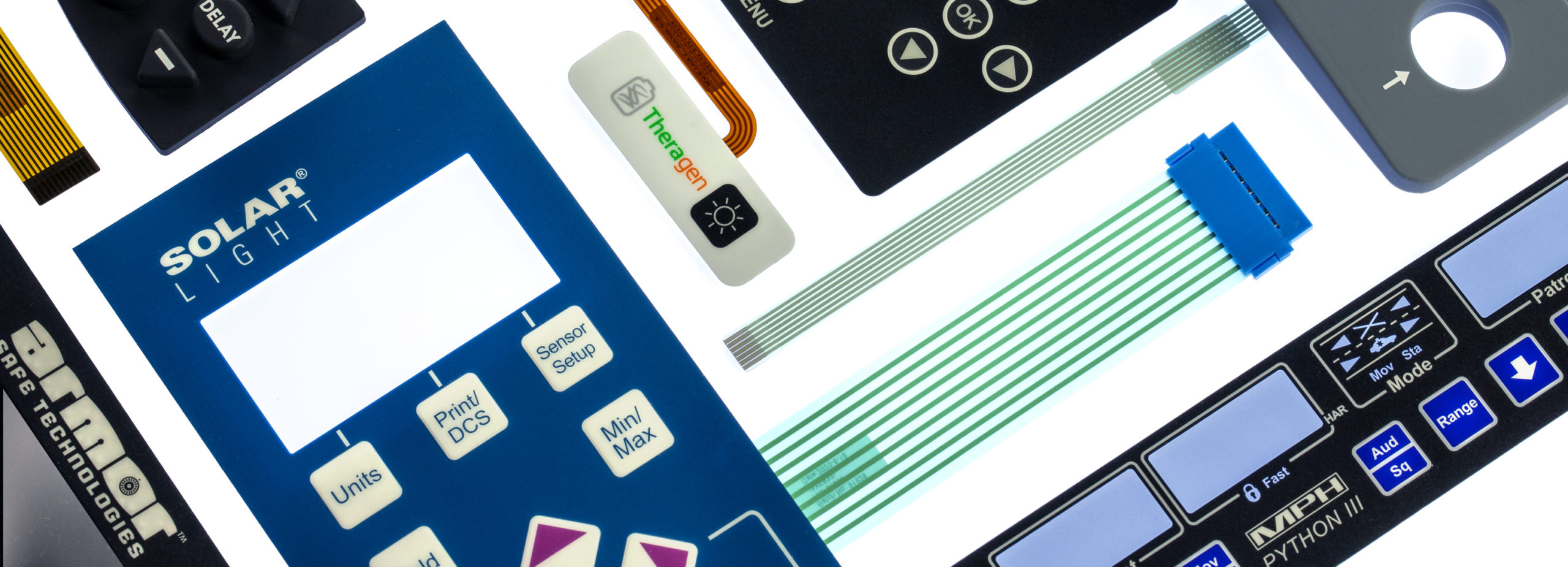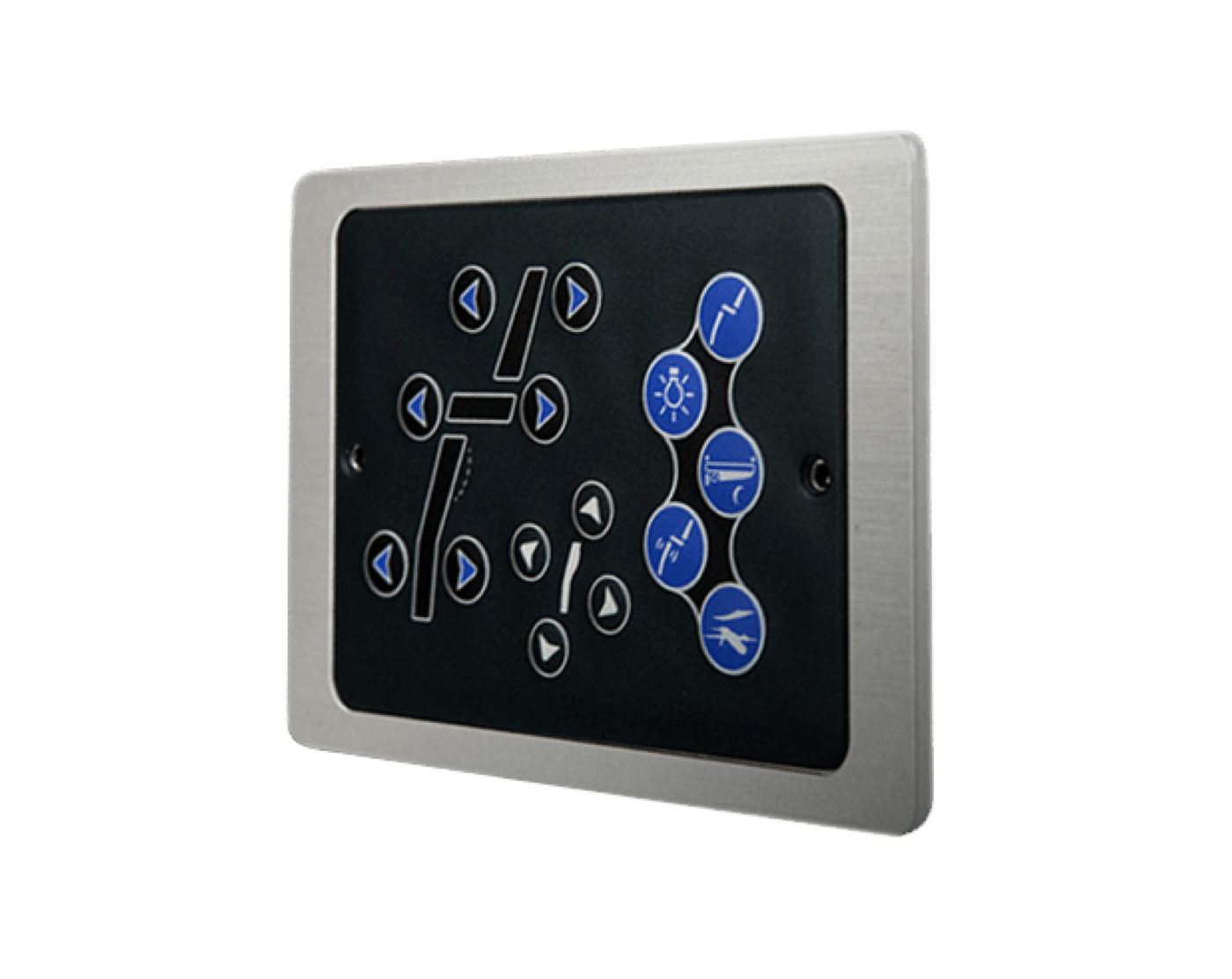Custom Membrane Switches for Specialized Applications: A Deep Dive
Custom Membrane Switches for Specialized Applications: A Deep Dive
Blog Article
Discover Exactly How Membrane Switches Function and Their Role in Modern Electronic Devices
Membrane Switches represent an advanced assimilation of innovation and layout within the realm of modern electronic devices, serving as vital user interfaces in countless devices. Included several layers, these buttons utilize pressure-sensitive systems to help with user communication. Their applications cover numerous markets, from customer electronic devices to medical tools, highlighting their flexibility and significance. Recognizing the details of Membrane switch performance and their broader effects in improving customer experience invites more exploration right into their layout, advantages, and the innovative advancements shaping their future in innovation.
What Are Membrane Switches?

Membrane switches are identified by their toughness and resistance to environmental aspects, such as dust, wetness, and extreme temperature levels. They can be personalized with different graphics, colors, and tactile feedback choices, improving customer experience while maintaining aesthetic charm - membrane switches. The unification of printed circuits allows for seamless assimilation right into tools, improving total capability.
The convenience of Membrane switches is evident in their capacity to sustain both complex and basic control features. They can integrate features such as LED indications and touch-sensitive technology, accommodating particular individual demands. As modern technology remains to evolve, Membrane Switches stay necessary for enabling reliable and instinctive interface, therefore playing a crucial duty in the improvement of modern-day digital tools.
Elements of Membrane Buttons
Membrane switches are made up of a number of essential parts that interact to create a functional and trustworthy user interface. The primary aspects consist of the visuals overlay, adhesive layer, spacer layer, and conductive traces.
The graphic overlay works as the customer interface, generally published on an adaptable substrate such as polyester or polycarbonate. This layer not only supplies aesthetic allure however likewise includes tactile comments, aesthetic hints, and protective features. Below the graphic overlay exists the adhesive layer, which secures the switch to the device and makes certain durability versus ecological stress and anxieties.
The spacer layer is critical for preserving the necessary gap between the visuals overlay and the circuit layer. When pressure is used, this gap allows for the activation of the switch. The conductive traces, typically made from silver or carbon, develop the electrical paths that finish the circuit when the button is engaged.
Additionally, a support layer might be included for structural assistance and insulation. These elements team up seamlessly, making certain that Membrane buttons are both resilient and easy to use, making them crucial in different modern-day electronic applications.
How Membrane Switches Work
Just how do Membrane Switches feature properly within electronic gadgets? Membrane Switches run on the principles of pressure-sensitive innovation, utilizing a layered building and construction that consists of graphic overlays, sticky layers, and conductive aspects.
The design of Membrane buttons is vital for their effective operation (membrane switches). The layers are thoroughly crafted to supply responsive feedback, sturdiness, and resistance to environmental elements such as moisture and dirt. The incorporation of domes-- little, increased locations within the switch-- boosts tactile reaction, giving users with an obvious click feeling upon activation
In addition, Membrane buttons can be personalized in regards to size, shape, and graphics, making them ideal for various applications. They are often utilized in control panels, clinical tools, and consumer electronics due to their sleek design and dependability. Generally, the efficient performance of Membrane switches is crucial in improving user interaction and ensuring seamless operation in contemporary electronic gadgets.

Applications in Modern Instruments
Using their distinct design and performance, Membrane buttons have actually come to be indispensable elements in a large range of modern digital gadgets. These functional user interfaces are employed in consumer electronic devices, commercial equipment, medical gadgets, and auto controls, supplying smooth user communication.
In customer electronic devices, Membrane switches are generally discovered in appliances like microwaves, washing devices, and various other house gadgets, where they allow instinctive control with a streamlined profile. Their inconspicuous layout helps with integration into small devices, boosting visual charm without endangering functionality.
In commercial applications, Membrane Switches act as control panels for machinery, providing resilience and resistance to harsh environments. Their capability to endure dampness and pollutants makes them excellent for use in production and handling markets.
Clinical tools also gain from Membrane buttons, which are developed to blog here be very easy to tidy and maintain, making certain health in scientific settings. They are frequently made use of in analysis equipment, patient surveillance systems, and portable clinical devices, where reliability is extremely important.
Benefits of Membrane Switches
Among the vital advantages of Membrane switches is their convenience, which enables them to be tailored for a range of applications across several industries. These switches can be created in different shapes and sizes, accommodating unique item requirements while giving seamless assimilation into tools. Their slim profile enables click a small and streamlined layout, usually enhancing the aesthetic charm of digital items.
Another significant advantage is their durability - membrane switches. Membrane buttons are normally resistant to dust, dampness, and chemicals, making them ideal for harsh atmospheres. This durability extends their lifespan compared to typical mechanical buttons, decreasing the need for frequent substitutes
Furthermore, Membrane Switches offer cost-effectiveness. The production procedure includes printing technologies that minimize manufacturing costs, specifically for large runs. This affordability, combined with reduced maintenance demands, makes them an eye-catching choice for producers.

Verdict
In verdict, Membrane Switches stand for a considerable improvement in individual interface modern technology within contemporary electronic devices. As the demand for resistant and intuitive imp source interfaces continues to grow, the function of Membrane buttons in shaping customer experience will most certainly increase.
Membrane Switches represent an innovative integration of modern technology and layout within the world of modern electronic devices, offering as vital interfaces in many tools.In the realm of contemporary electronics, Membrane Switches serve as crucial components that assist in customer interaction with devices. As modern technology continues to develop, Membrane Switches remain crucial for making it possible for effective and instinctive user interfaces, thereby playing a crucial role in the development of modern electronic devices.
Exactly how do Membrane Switches feature efficiently within electronic devices? In general, the effective functioning of Membrane buttons is crucial in improving user interaction and ensuring seamless procedure in modern-day electronic tools.
Report this page